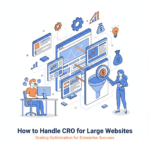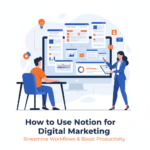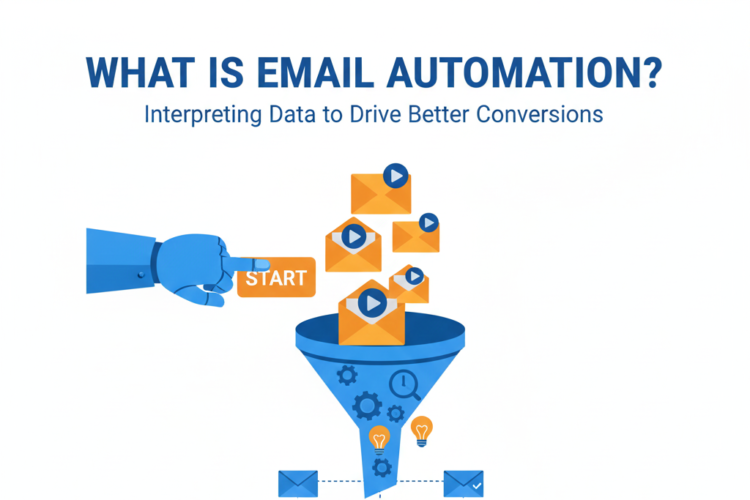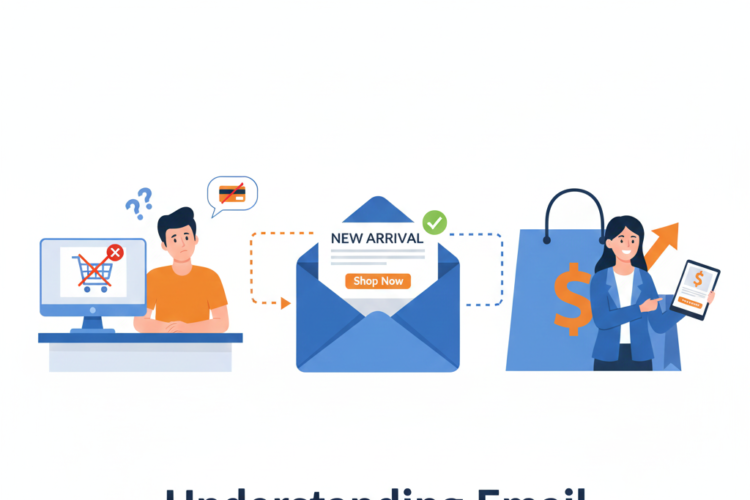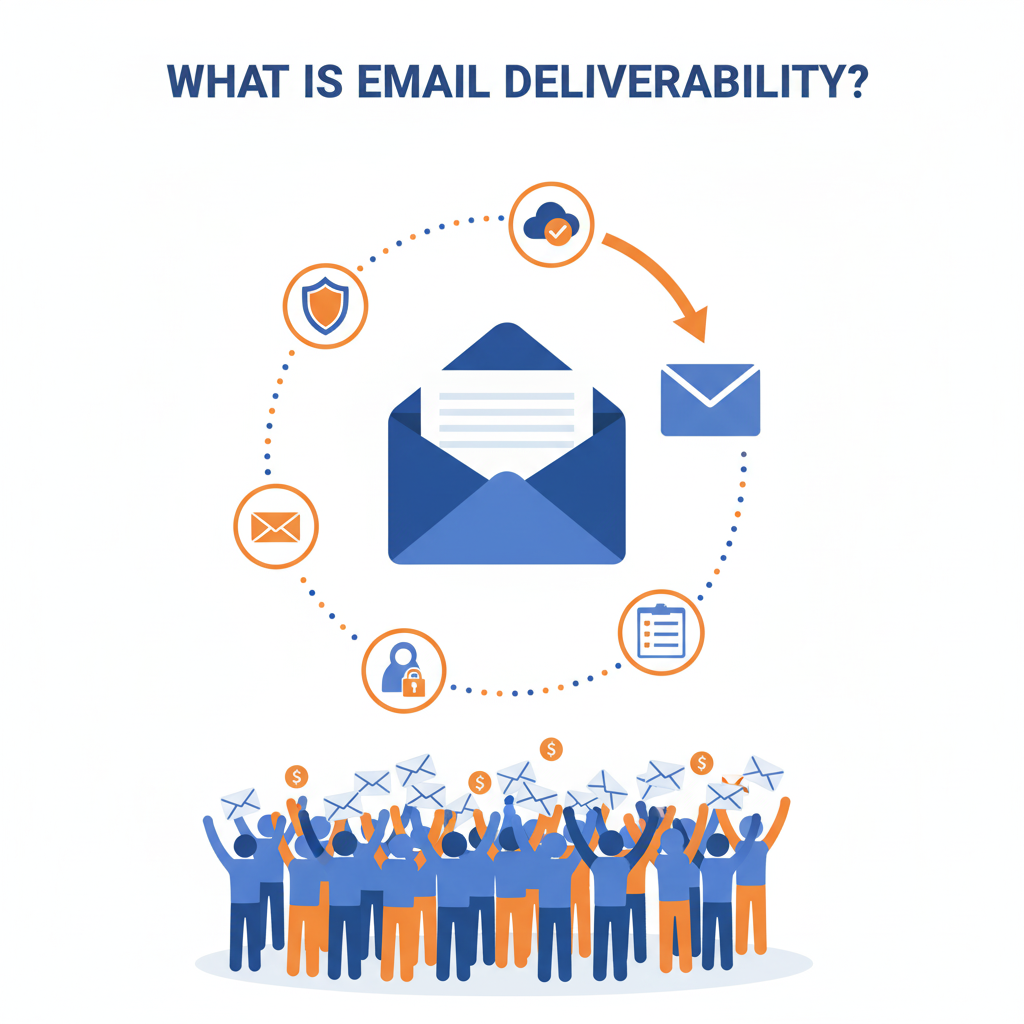
What is Email Deliverability?
The Complete 2025 Guide to Reaching the Inbox, Not the Spam Folder
📌 Table of Contents
-
Introduction: Why Email Deliverability Matters
-
Email Deliverability vs. Delivery Rate
-
How Email Deliverability Works
-
Key Factors Affecting Deliverability
-
Sender Reputation Explained
-
Technical Setup for Better Deliverability
-
Authentication Protocols (SPF, DKIM, DMARC)
-
List Hygiene and Subscriber Management
-
Engagement Signals and Their Impact
-
Spam Triggers and How to Avoid Them
-
Types of Email Filters and How They Work
-
Role of Email Content in Deliverability
-
Email Frequency and Cadence Best Practices
-
Monitoring Email Deliverability
-
Tools to Test and Improve Deliverability
-
Case Studies: When Deliverability Goes Wrong
-
Email Deliverability Benchmarks (2025)
-
Future Trends in Email Deliverability
-
Common Myths and Misconceptions
-
Final Thoughts + Checklist for Maximum Deliverability
1. 🧠 Introduction: Why Email Deliverability Matters
You can spend hours crafting the perfect subject line, copy, and design. But if your email ends up in the spam folder — or worse, never reaches the inbox — it’s all wasted.
Email deliverability is the backbone of your email marketing strategy. In 2025, with privacy changes, inbox overload, and smarter spam filters, deliverability has become both critical and challenging.
If you don’t manage it proactively, you’ll:
-
See lower open and click-through rates
-
Waste money on undelivered emails
-
Miss opportunities for revenue and engagement
-
Damage your sender reputation permanently
2. 📩 Email Deliverability vs. Delivery Rate
Email Delivery Rate:
The percentage of emails accepted by the recipient’s mail server (e.g., Gmail, Yahoo).
Email Deliverability:
The ability of your email to land in the inbox (not promotions, spam, or bounce).
Example:
You send 10,000 emails.
-
9,800 are accepted (98% delivery rate)
-
But only 6,500 land in inbox (65% deliverability)
High delivery rate ≠ High deliverability.
3. 🔁 How Email Deliverability Works
Step-by-Step Breakdown:
-
Email is sent via ESP (e.g., Mailchimp, SendGrid)
-
Recipient’s mail server authenticates the sender
-
Filters analyze sender reputation, content, and engagement history
-
Email is:
-
Delivered to inbox
-
Delivered to promotions or spam
-
Rejected (bounced)
-
Every mailbox provider (Gmail, Outlook, Yahoo) uses proprietary algorithms to decide inbox placement.
4. 📉 Key Factors That Affect Deliverability
| Factor | Description |
|---|---|
| 🏷 Sender Reputation | History of your sending behavior |
| 🔐 Email Authentication | SPF, DKIM, DMARC setup |
| 👥 List Quality | Verified, permission-based subscribers |
| 📊 Engagement | Opens, clicks, replies, unsubscribes |
| 💬 Content Quality | Spam triggers, formatting, grammar |
| 🧼 List Hygiene | Removing inactive or bounced emails |
| 📆 Sending Frequency | Too often or too sporadic = problems |
| ⚙️ Technical Setup | IP warmup, domain settings, reverse DNS |
5. 📉 Sender Reputation: Your Deliverability Credit Score
Every sender (IP address + domain) has a reputation score with ISPs.
Factors Influencing Reputation:
-
Spam complaints
-
Bounce rates
-
Engagement metrics
-
Sending volume patterns
-
IP and domain age
-
Blacklist history
Use tools like:
6. ⚙️ Technical Setup for Better Deliverability
Before you send a single campaign:
-
✅ Use a dedicated sending domain (e.g., mail.yourdomain.com)
-
✅ Configure reverse DNS
-
✅ Set a valid From Address
-
✅ Use consistent sending IP (avoid sudden changes)
-
✅ Warm up new IPs gradually (start with low volume)
7. 🔐 Authentication Protocols
| Protocol | Purpose |
|---|---|
| SPF (Sender Policy Framework) | Ensures the IP is authorized to send for your domain |
| DKIM (DomainKeys Identified Mail) | Cryptographic signature verifying content integrity |
| DMARC (Domain-based Message Authentication) | Tells recipient servers what to do if SPF/DKIM fail |
Set up all three. Without them, Gmail and Outlook will throttle or reject your messages.
8. 🧼 List Hygiene and Subscriber Management
A clean email list = higher deliverability.
Hygiene Best Practices:
-
Use double opt-in
-
Never buy or rent lists
-
Remove:
-
Hard bounces immediately
-
Soft bounces after 3–5 attempts
-
Unengaged subscribers (after 60–90 days)
-
-
Segment by engagement (active vs. inactive)
Use tools like:
-
ZeroBounce
-
NeverBounce
-
BriteVerify
9. 📈 Engagement Signals and Deliverability
Mailbox providers track user behavior:
| Signal | Effect |
|---|---|
| ✅ Open, click, reply | Boosts sender reputation |
| 🚫 Spam flag, delete | Damages reputation |
| 📤 Move to primary inbox | Positive signal |
| 😴 No opens over time | Lowers engagement score |
Regularly prune cold subscribers to improve engagement metrics.
10. 🚫 Spam Triggers to Avoid
| Category | Examples |
|---|---|
| Words | “Free!!!”, “Make $$$ now”, “Risk-free” |
| Symbols | Too many exclamation points!!! $$$ |
| Formatting | All caps SUBJECT LINES |
| Images | Image-only emails, no alt text |
| Links | Broken links, URL shorteners like bit.ly |
| Senders | Generic or shady domain (e.g., @cheapdealz.info) |
Use spam-checking tools before sending, such as Mail-Tester or GlockApps.
11. 📥 Types of Email Filters
| Filter Type | Description |
|---|---|
| Gateway Filters | At server level (e.g., Barracuda, Proofpoint) |
| Content Filters | Scan for spam words, layout, reputation |
| Engagement Filters | Gmail uses machine learning to assess user-level engagement |
| User Filters | Manually set by users (rules, labels) |
Deliverability = passing all 4 layers.
12. ✍️ Role of Content in Deliverability
Even with technical perfection, bad content can kill your inbox rate.
Best Practices:
-
Personalize subject lines and preview text
-
Keep HTML clean and mobile-friendly
-
Use clear, permission-based language
-
Include your physical address + unsubscribe link
-
Avoid spammy fonts, colors, and broken code
-
Maintain text-to-image balance (at least 60/40)
13. 📅 Email Frequency and Timing
-
Sudden spikes = suspicious
-
Long inactivity followed by bulk = suspicious
-
Find your ideal cadence:
-
Daily for newsletters (with high value)
-
Weekly for updates
-
Monthly for digests
-
Warm up new lists gradually. Start with your most engaged contacts.
14. 📊 Monitoring Email Deliverability
Key Metrics to Track:
| Metric | Ideal Range |
|---|---|
| Delivery Rate | 98%+ |
| Bounce Rate | < 2% |
| Spam Complaint Rate | < 0.1% |
| Unsubscribe Rate | < 0.5% |
| Open Rate (post-iOS 15) | 20–40% |
| Click Rate | 2–10% |
| Engagement Score | Depends on ESP |
Use feedback loops from Gmail, Yahoo, Outlook to receive complaint alerts.
15. 🧰 Tools to Test and Improve Deliverability
-
Mail-Tester.com – Quick spam score analysis
-
GlockApps – Inbox placement tests
-
Litmus / Email on Acid – Design & rendering previews
-
Postmark – Transactional email monitoring
-
Postmaster Tools (Gmail) – Sender domain analysis
-
MxToolbox – DNS + blacklist checker
-
SenderScore.org – Reputation scoring
16. ⚠️ Case Studies: When Deliverability Goes Wrong
Example 1: SaaS Startup
-
Mistake: Imported 40,000 cold leads from scraped sources
-
Result: 22% bounce rate, flagged by Gmail
-
Fix: Paused all campaigns, cleaned list, reauthenticated, re-warmed IP
-
Recovery time: 3 weeks
Example 2: Retail Brand
-
Mistake: Sent identical promo email to 500,000 inactive users
-
Result: Spam filters throttled deliverability for 3 weeks
-
Fix: Segmented based on activity, used a re-engagement campaign
17. 📈 Email Deliverability Benchmarks (2025)
| Metric | Benchmark |
|---|---|
| Inbox Placement Rate | 85–95% |
| Open Rate (post iOS privacy) | 25–35% |
| Click-Through Rate | 2–5% |
| Bounce Rate | <2% |
| Spam Complaints | <0.1% |
| Engagement per 1000 Emails | 250–400 engaged users |
These vary by industry and list size.
18. 🔮 Future Trends in Email Deliverability
-
AI-based filtering by mailbox providers
-
Greater emphasis on engagement-based filtering
-
Tight integration of BIMI (brand logo visibility)
-
Content fingerprinting to detect spam patterns
-
Stronger laws around consent and data privacy
-
GPT/AI-written content detection in spam scoring
Proactive deliverability monitoring will be a competitive edge.
19. ❌ Common Myths and Misconceptions
| Myth | Reality |
|---|---|
| Buying email lists is okay | It destroys your reputation |
| All emails go to inbox by default | Filters evaluate every message |
| A low bounce rate means good deliverability | You can have low bounce, but still hit spam |
| One bad campaign won’t hurt | Every email impacts your long-term trust score |
| iOS 15 ended email tracking | Not true — many signals still exist beyond opens |
20. ✅ Final Thoughts + Email Deliverability Checklist
Email deliverability is not just a technical task. It’s a strategic pillar of your email marketing performance.
Neglect it, and you lose reach, revenue, and trust. Master it, and you unlock reliable, high-ROI communication with your audience.
📋 Email Deliverability Checklist
-
Domain authentication (SPF, DKIM, DMARC)
-
Reverse DNS and sending domain warmup
-
Regular list cleaning and double opt-in
-
Segmentation by engagement level
-
Content spam-check before every send
-
Avoid large image-only emails
-
Monitor open, bounce, spam, click rates weekly
-
Test inbox placement across ISPs
-
Use re-engagement and win-back flows
-
Stay off blacklists and monitor IP/domain health
Author
